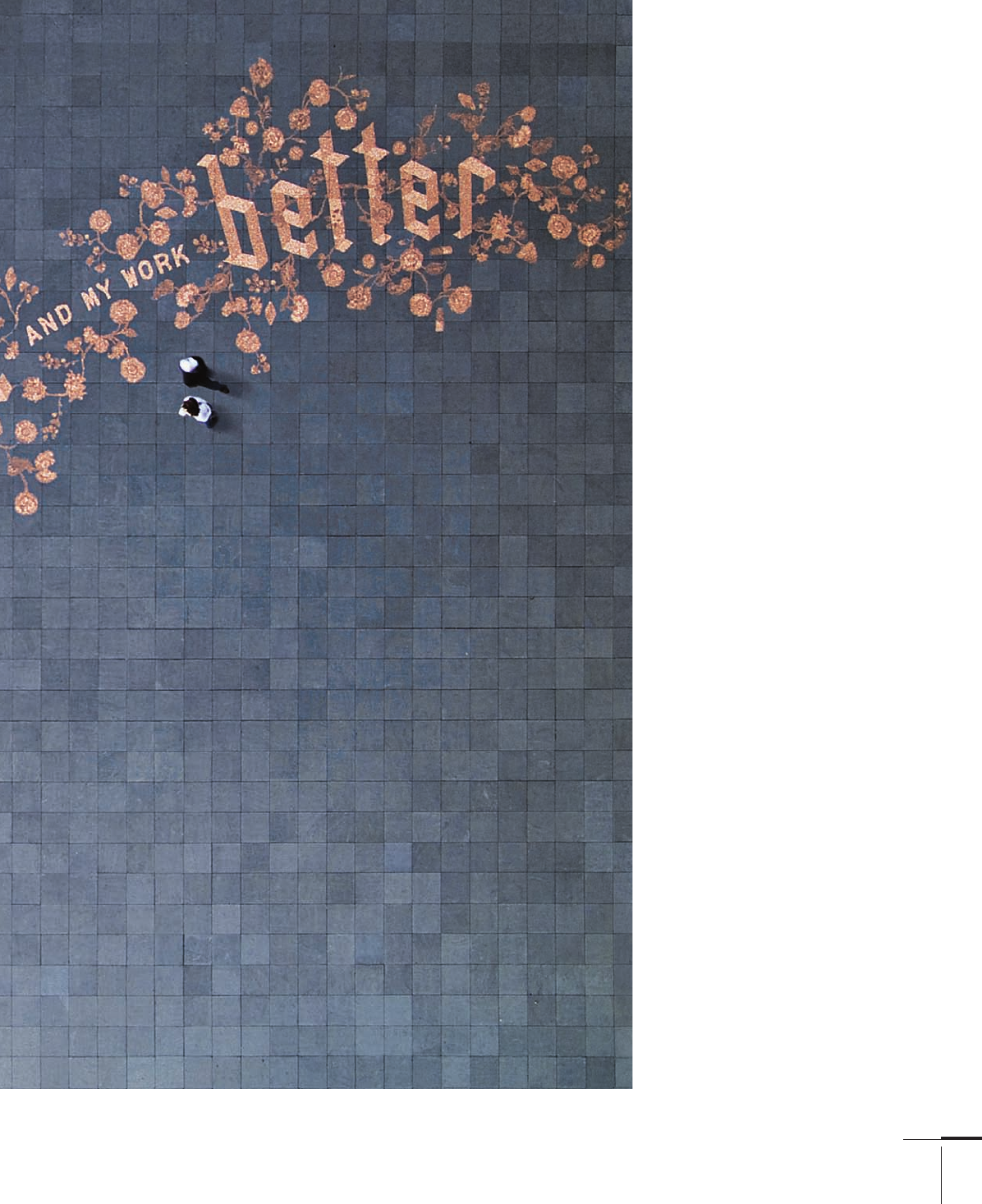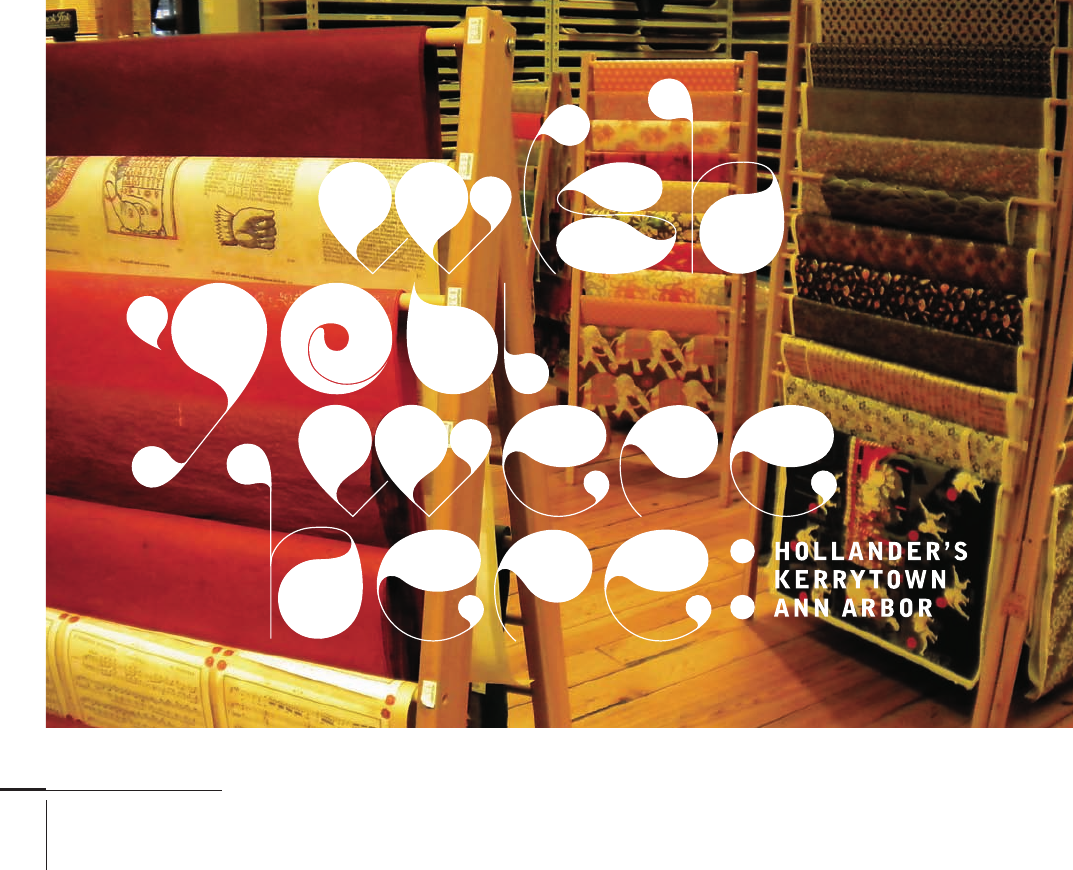
Job:03171 Title:Typography Referenced (Rockport)
Page: 235
234-273 03171_C2.indd 235 10/12/11 9:02 AM
Text
Job:03171 Title:Typography Referenced (Rockport)
Page: 235
235
A
new generation of typogra-
phers continues to deliver
fonts at an alarming pace.
As a result, designers have
a multiplicity from which to choose,
and they take greater liberties with let-
terforms, modifying them often with
abandon, yet sometimes with great care.
Technology has made type design—
as well as type hybridization, layout, and
destruction—accessible to almost anyone
with a computer. Because graphic designers
themselves understand the technologies
and principles that type designers use, they
sometimes envision themselves as poten-
tial type designers. On the fringes, a mass
of type designers—in print and digital
domains—has erupted around the world,
many who consider their craft on par with
typographers who slave over creating a
single typeface.
So what makes a type designer? What
makes a designer capable of desiging type?
These questions have been hotly debated,
and the fact that each dabbles in the
other’s trade further complicates matters.
“Obsessions make my
life worse and my work
better,” custom typog-
raphy, Sagmeister
Inc., United States
234-273 03171.indd 235 9/24/11 10:24 AM

Job:03171 Title:Typography Referenced (Rockport)
Page: 236
234-273 03171_C2.indd 236 10/12/11 9:23 AM
Text
Job:03171 Title:Typography Referenced (Rockport)
Page: 236
236
Typography, Referenced
“Wish You Were Here,”
Kelly Salchow MacArthur,
United States
Or perhaps this pluralism enlivens
and expands an already-robust creative
landscape. All of these disciplines
continue to cross-pollinate, and
despite the diff erences in perspective,
practice, and style, one thing remains
consistent: Anyone who designs type,
designs with type, or hand letters type
is involved in the world of type design.
For centuries, designers have used
type for communicative, expressive,
educational, and entertainment pur-
poses. Contemporary designers continue
those traditions, albeit through diff erent
approaches, technology, and aesthet-
ics. Form may follow function. Type
can become an image. No matter what,
readers still seek out information and
clarity, sometimes wanting merely
visual entertainment, and in some cases,
wanting a spectacle instead of a message.
In these pages are some examples of
the inspirational ways that designers have
used type as a primary means of design,
an end unto itself: type as image, type as
word, type as the ultimate communica-
tor, form and function rolled into one.
234-273 03171.indd 236 9/24/11 10:24 AM

Job:03171 Title:Typography Referenced (Rockport)
Page: 237
234-273 03171_C2.indd 237 10/12/11 9:14 AM
Text
Job:03171 Title:Typography Referenced (Rockport)
Page: 237
Contemporary Usage: Designing with Type
237
Grand Prix,
Ralph Schraivogel,
Switzerland
Still from Typophile 5 Studio ,
Brent Barson, United States
234-273 03171.indd 237 9/24/11 10:24 AM

Job:03171 Title:Typography Referenced (Rockport)
Page: 238
234-273 03171_C2.indd 238 10/12/11 9:21 AM
Text
Job:03171 Title:Typography Referenced (Rockport)
Page: 238
238
Typography, Referenced
CONTEMPORARY USAGE: DESIGNING WITH TYPE
Posters
Black Point hand lettering, Voice, Australia
234-273 03171.indd 238 9/24/11 10:24 AM
..................Content has been hidden....................
You can't read the all page of ebook, please click here login for view all page.

